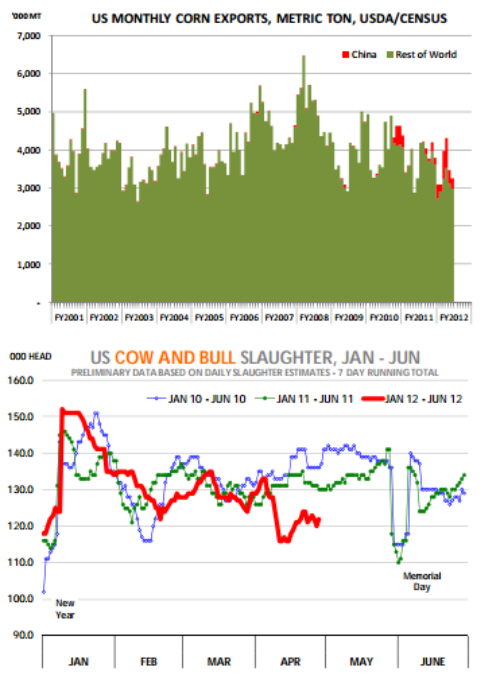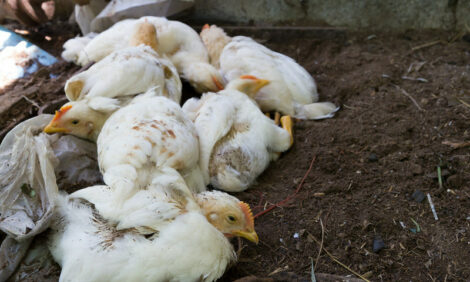



CME: Corn Futures Higher as China Purchases Corn
US - US nearby corn futures were sharply higher on Friday as market participants reacted to news that China purchased 1.472 million metric tons of corn (58 million bushels), write Steve Meyer and Len Steiner.This was one of the biggest one time corn purchases on record to
this market and it reignited speculation that old corn crop stocks
are very tight and may need some rationing until the new crop
starts flowing in. The fact that the new crop has been planted
relatively early in the ECB should provide some notable supplies
before the end of August (official end of marketing year) and yet
grain markets remain concerned about the effect some cooler
weather on corn breaking above ground. But back to the China
story, there has been plenty of speculation in recent months as to
how big a buyer of US corn China will be in the coming years.
Not very long ago, China was a net exporter of corn to a number
of Asian destinations, benefiting both from a freight advantage
and lower costs. However, feed demand in China has been outpacing supply increases. In 2009/10 marketing year, China produced 163.97 MMT (~6.463 bil. Bu) of corn and imported about
1.3 MMT. In marketing year 2011/12, China corn production is
forecast to increase by almost 28 MMT or 17% and yet China is
forecast to import 4 MMT. The increase in Chinese feed demand
has tightened feed availability for a number of Asian markets
that traditionally imported corn from China. And as China now
accounts for 1 out of 5 bushels of corn produced in the world, the
market is now vulnerable to weather events in that part of the
world more so than at any other time on record.
US cow and bull slaughter continues to run well below
year ago levels. While much of the attention recently has been
on packers slowing down slaughter in an effort to prop up prices
ahead of Memorial Day needs, the slowdown in the cow and bull
slaughter is more a reflection of the fundamentals in the beef
market, improving feed conditions compared to a year ago and
strong feeder cattle prices out front have changed the incentives
for cow-calf producers. Indeed, US cow slaughter would be down
even more had it not been for the sharp pullback in milk values,
which are now pushing more dairy cows to market.
The weekly
cow slaughter data, which are published with a two week lag,
showed that for the last four reported weeks (Mar 18 - Apr 14),
total US cow slaughter was 457,400 head, 5.5% lower than a year
ago. During that period, beef cow slaughter was 210,600 head,
17.6% lower than a year ago while dairy cow slaughter was
246,800 head, 7.9% higher than a year ago. Dairy cow slaughter
currently makes up about 54% of the overall US cow slaughter,
the highest such proportion in more than 20 years. It is still
early to proclaim a full rebuilding year as pasture conditions in a
number of key states remain tenuous. A sharp deterioration in
weather conditions could quickly impact beef cow slaughter. As
for the dairy industry, increased productivity, higher cow number
and, even more critically, slowing domestic and export demand,
will likely cause producers to increase the pace of diary herd liquidation, but this time with no government money









